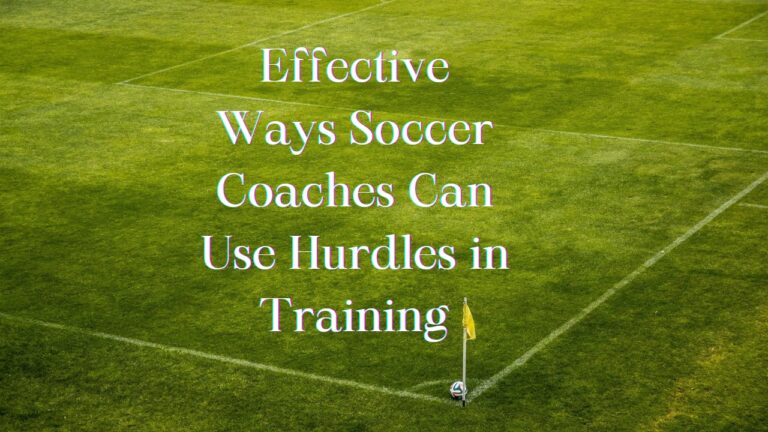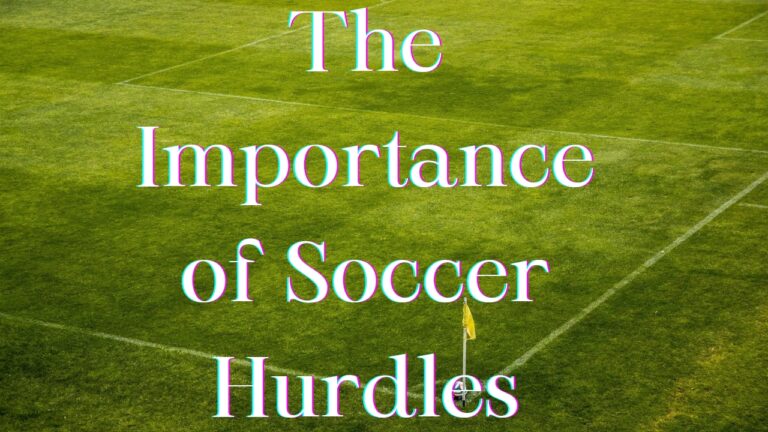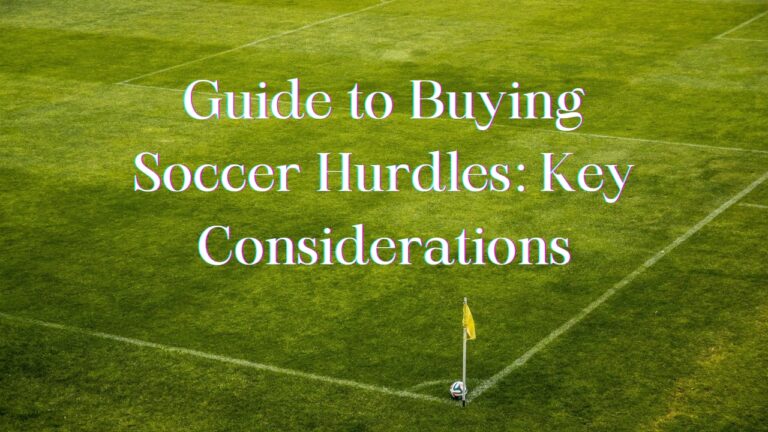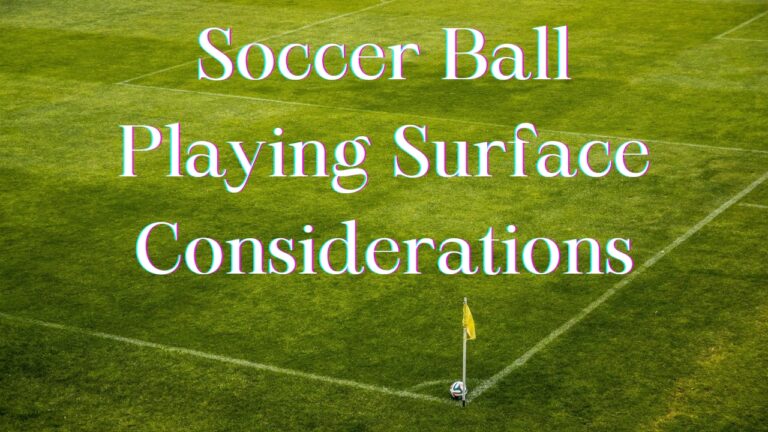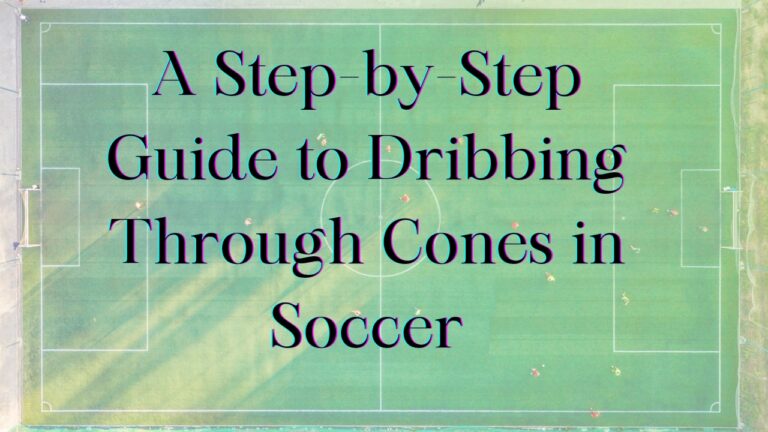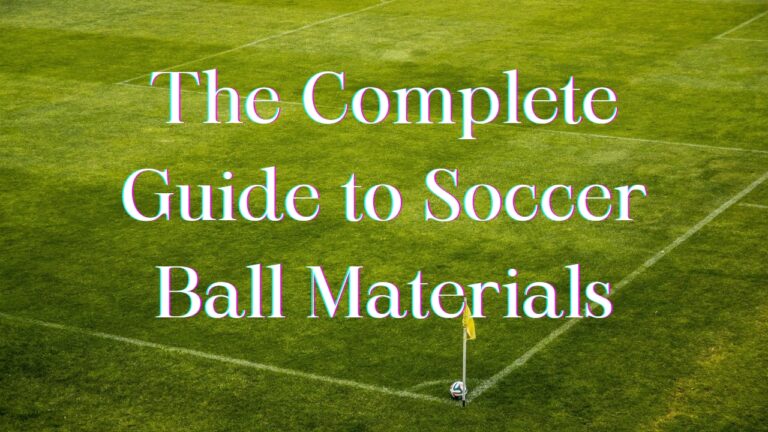Soccer cones are an essential training tool for developing key skills like footwork, speed, coordination, and change of direction. Setting up cones allows you to design targeted drills that will take your game to the next level.
However, not all cones are created equal. The type of cones you choose can impact the effectiveness of your agility drills. This article will explore the critical factors you should consider when buying soccer cones to optimize your training.
We will cover cone shape, materials, size, quantity, portability, visibility, and budget. With the right knowledge, you can select high-quality cones tailored to your needs. Read on to make an informed decision that will give you or your team an edge on the field.
Types of Soccer Cones
The first decision is whether you want disc cones or flat cones. Disc cones have a rounded bottom and are the traditional cone shape most people imagine. Flat cones have a wide, stable base and low center of gravity.
- Disc cones are more prone to tipping over, especially in windy conditions. However, some argue they are better for footwork drills because the instability trains players to be light on their feet. Disc cones are also easier to stack and transport.
- Flat cones; don’t skid around on slick grass and firmly anchor skill drills. But some dislike that they don’t rock or influence when players make contact during dribbling activities. Flat cones take up more room in bags.
- Collapsible cones offer the portability of disc cones with the stability of flat cones. They can be collapsed down for storage and travel. These hybrid cones provide versatility for different types of drills.
Cone color also merits consideration. Vibrant colors like orange and yellow are easiest to spot on green grass. Opt for cones with reflective striping if you often train at dawn, dusk, or night. You can also color code cones for different stations or drills.
Cone Materials
Cone material affects both durability and price. The three main options are plastic, rubber, and foam.
- Plastic cones are the most affordable choice. They are lightweight and easy to carry in bulk. However, plastic is not very durable and cones can crack or get flattened over time.
- Rubber cones are more heavy-duty and weather-resistant. They hold up well to regular use and getting stepped on. But rubber cones cost significantly more than plastic ones.
- Foam cones offer a nice mid-point. They are lightweight like plastic but have more give. Foam cones are safer for close-contact drills and won’t scuff floors if used indoors. The soft material also hinders noise on impact. However, foam cones can fade and deteriorate faster than plastic or rubber.
For most training programs, rubber cones provide the best blend of durability and functionality. But consider how frequently cones will be used and the surface they’ll be on. Plastic or foam may suffice for low-contact drills on soft grass.
Cone Base Size and Height
The dimensions of a cone’s base and overall height are also key considerations.
Wider cone bases provide more stability and prevent tipping over. They also give players a larger target to aim at or avoid. 12-inch bases are a popular mid-range size for stability without taking up too much room.
Adjustable cone heights allow you to adapt drills as players improve. Start new players at 6 or 8 inches high, then increase up to 12-18 inches as skills progress. Locking height settings ensure cones stay fixed during training.
Recommended cone heights and diameters:
- Young children (5-8 yrs) – 4-6 in. high, 4-6 in. diameter base
- Older children (8-12 yrs) – 6-12 in. high, 6-10 in. diameter base
- Teens (12-18 yrs) – 12-15 in. high, 8-12 in. diameter
- Adults – 15-18 in. high, 10-12 in. diameter
The ability to adjust cone height and spacing is valuable for creating dynamic drills tailored to your team’s abilities. Tough wider bases also prevent frustrated kicking when players accidentally hit cones.
Number of Cones
Determining how many cones you need depends on several factors:
- The number of players: You want enough cones for everyone to have adequate space for drills.
- Types of drills and exercises: Basic dribbling drills may need 6-10 cones per player while passing drills require more.
- Field space: Long straight courses take more cones than compact shape-based drills.
- Stations: If you run multiple stations, purchase extra cones to avoid reshuffling.
- Expansion: Getting extra cones allows the implementation of new drills later.
As a general guideline:
- For individuals, get 30-50 cones to set up several drills.
- For small youth teams (5-15 players), aim for 100-150 cones.
- For club/high school teams (15-30 players), get 200-300 cones for versatile practices.
Purchasing cone sets or in bulk quantities saves money compared to individual cones. It also ensures you have enough on hand for various team drills.
Cone Portability
Being able to easily transport and carry cones to and from practice is a big convenience factor.
Many cones have holes at the top for stringing them together over your shoulder or connecting to a rope. This allows you to neatly pick up and move multiple cones at once.
Carry bags come in various sizes and styles. Handheld bags with drawstring closures are good for smaller cone sets. Larger over-the-shoulder duffle bags can hold 50+ cones. Hard plastic cases with shoulder straps provide sturdy protection when transporting cones.
For large team sets, look for bags or cases with wheels for easy rolling across fields and sidewalks. Some even have telescoping handles like rolling luggage. Sturdy multi-level rolling cases can hold hundreds of cones compactly.
Portable cone caddies and wagons are also handy for quickly moving cones from storage to field space. Convenient transport means more time practicing and less time fetching stray cones.
Cone Visibility
The ability to spot cones easily on the field is crucial for effective drills. Bright-colored cones stand out against grass and dirt better than darker muted tones.
Orange and yellow are classic visible cone colors. Opt for cones in vivid light or bright shades for maximum visibility.
Adding reflective striping helps cones stand out in low light at dawn or dusk. Some cones have reflective bands around the bottom and top.
You can also use color coding to quickly ID different stations or drills. Have red cones for one passing drill, green for a dribbling course, etc. This lets you reconfigure setups faster.
In addition to color, look for cones with a textured surface rather than a smooth slick surface. This helps them stay visible and not blend into the surroundings.
The bottom line is choosing easily spotted cones removes any excuse for not seeing and avoiding them during intense drills.
Budget and Pricing
When selecting soccer cones, set a budget appropriate for your needs and stick to it. Prices range widely based on:
- Material: Rubber is the most expensive, foam mid-range, and plastic cheapest
- Size: Individual cones cost less than sets, bulk packs are the most economical
- Brand: Major brands like Nike, Adidas, and Pugg charge more
- Special features: Adjustable, collapsible cones cost more
Look for deals on multi-packs. And consider paying more upfront for durability rather than replacing complicated cones often.
Conclusion
Selecting the right soccer cones for your training needs requires considering several factors like type, materials, size, quantity, transport, visibility, and budget. Discs or flats? Plastic or rubber?
What height and base width? How many do you need? Being strategic with these decisions will provide the best value while meeting your unique requirements. Prioritize durable materials and adjustable sizing as skills progress. And don’t skimp on visibility – it’s a key to avoiding collisions.
With a quality set of cones tailored to your team’s abilities, you’ll maximize the benefits of agility drills for improving footwork, coordination, speed, and quickness. The investment will quickly pay off in elevated performance.
Related Post: How to Dribble Through Cones in Soccer: A Step-by-Step Guide
Author


